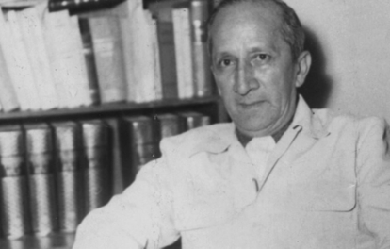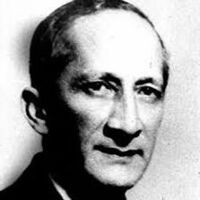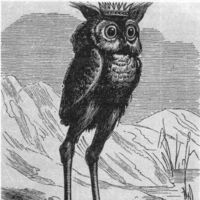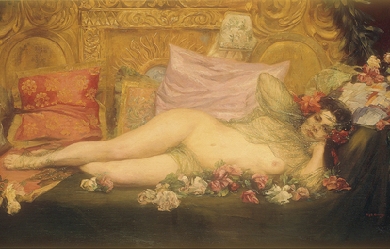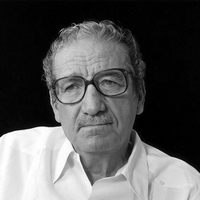
Info
The Blind Girl
John Everett Millais
1854 – 1856
Birmingham Museum and Art Gallery
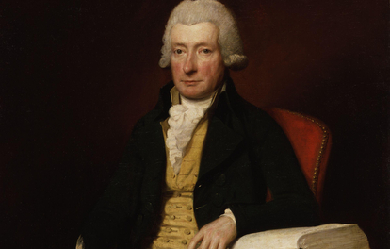
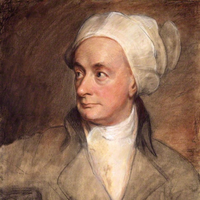
William Cowper (26 November 1731– 25 April 1800) was an English poet and hymnodist. One of the most popular poets of his time, Cowper changed the direction of 18th century nature poetry by writing of everyday life and scenes of the English countryside. In many ways, he was one of the forerunners of Romantic poetry. Samuel Taylor Coleridge called him “the best modern poet”, whilst William Wordsworth particularly admired his poem Yardley-Oak. He was a nephew of the poet Judith Madan.
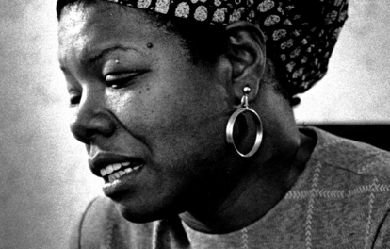

Maya Angelou (born Marguerite Ann Johnson; April 4, 1928 – May 28, 2014) was an American author and poet. She published seven autobiographies, three books of essays, and several books of poetry, and is credited with a list of plays, movies, and television shows spanning more than fifty years. She received dozens of awards and over thirty honorary doctoral degrees. Angelou is best known for her series of seven autobiographies, which focus on her childhood and early adult experiences. The first, I Know Why the Caged Bird Sings (1969), tells of her life up to the age of seventeen, and brought her international recognition and acclaim. Angelou's long list of occupations has included pimp, prostitute, night-club dancer and performer, cast-member of the musical Porgy and Bess, coordinator for Martin Luther King, Jr.'s Southern Christian Leadership Conference, author, journalist in Egypt and Ghana during the days of decolonization, and actor, writer, director, and producer of plays, movies, and public television programs.
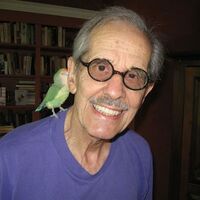
I was born in Hamilton, Ohio, in 1925, a confession that I am an old geezer. I served in the infantry during World War II, was wounded and discharged in 1946. I then obtained a B.A. degree with honors in English in 1949. Subsequently I taught in Cincinnati public schools and at the University of Cincinnati for the next 35 years. My poetry has appeared in: * Wall Street Journal * Hellas * Lyric * Envoi * Midwest Poetry Review (a sonnet won awards) * Aethlon * Light * Poet's View * Classical Outlook * Mind over Matter Several books have been self-published but Wormwood and Whines, a compilation of many of my poems, was published by Superior Books in 1999.
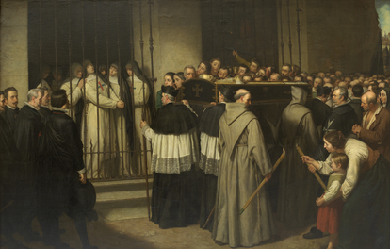
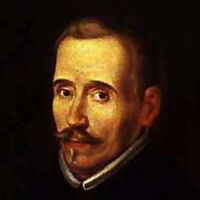
Lope de Vega Carpio (Madrid, 25 de noviembre de 1562 – Madrid, 27 de agosto de 1635) fue uno de los poetas y dramaturgos más importantes del Siglo de Oro español y, por la extensión de su obra, uno de los autores más prolíficos de la literatura universal. El llamado Fénix de los ingenios y Monstruo de la Naturaleza (por Miguel de Cervantes) renovó las fórmulas del teatro español en un momento en el que el teatro comenzaba a ser un fenómeno cultural de masas. Máximo exponente, junto a Tirso de Molina y Calderón de la Barca, del teatro barroco español, sus obras siguen representándose en la actualidad y constituyen una de las cotas más altas alcanzadas en la literatura y las artes españolas. Fue también uno de los grandes líricos de la lengua castellana y autor de varias novelas y obras narrativas largas en prosa y en verso.
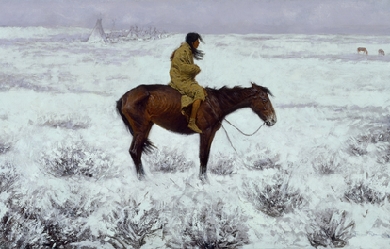
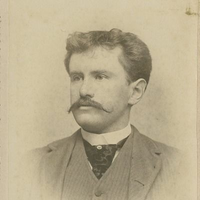
William Sydney Porter (September 11, 1862– June 5, 1910), known by his pen name O. Henry, was an American short story writer. His stories are known for their surprise endings. Biography Early life William Sidney Porter was born on September 11, 1862, in Greensboro, North Carolina. He changed the spelling of his middle name to Sydney in 1898. His parents were Dr. Algernon Sidney Porter (1825–88), a physician, and Mary Jane Virginia Swaim Porter (1833–65). William’s parents had married on April 20, 1858. When William was three, his mother died from tuberculosis, and he and his father moved into the home of his paternal grandmother. As a child, Porter was always reading, everything from classics to dime novels; his favorite works were Lane’s translation of One Thousand and One Nights and Burton’s Anatomy of Melancholy. Porter graduated from his aunt Evelina Maria Porter’s elementary school in 1876. He then enrolled at the Lindsey Street High School. His aunt continued to tutor him until he was fifteen. In 1879, he started working in his uncle’s drugstore in Greensboro, and on August 30, 1881, at the age of nineteen, Porter was licensed as a pharmacist. At the drugstore, he also showed off his natural artistic talents by sketching the townsfolk. Move to Texas Porter traveled with Dr. James K. Hall to Texas in March 1882, hoping that a change of air would help alleviate a persistent cough he had developed. He took up residence on the sheep ranch of Richard Hall, James’ son, in La Salle County and helped out as a shepherd, ranch hand, cook, and baby-sitter. While on the ranch, he learned bits of Spanish and German from the mix of immigrant ranch hands. He also spent time reading classic literature. Porter’s health did improve. He traveled with Richard to Austin in 1884, where he decided to remain and was welcomed into the home of Richard’s friends, Joseph Harrell and his wife. Porter resided with the Harrells for three years. He went to work briefly for the Morley Brothers Drug Company as a pharmacist. Porter then moved on to work for the Harrell Cigar Store located in the Driskill Hotel. He also began writing as a sideline and wrote many of his early stories in the Harrell house. As a young bachelor, Porter led an active social life in Austin. He was known for his wit, story-telling and musical talents. He played both the guitar and mandolin. He sang in the choir at St. David’s Episcopal Church and became a member of the “Hill City Quartette”, a group of young men who sang at gatherings and serenaded young women of the town. Porter met and began courting Athol Estes, then seventeen years old and from a wealthy family. Historians believe Porter met Athol at the laying of the cornerstone of the Texas State Capitol on March 2, 1885. Her mother objected to the match because Athol was ill, suffering from tuberculosis. On July 1, 1887, Porter eloped with Athol and were married in the parlor of the home of Reverend R. K. Smoot, pastor of the Central Presbyterian Church, where the Estes family attended church. The couple continued to participate in musical and theater groups, and Athol encouraged her husband to pursue his writing. Athol gave birth to a son in 1888, who died hours after birth, and then a daughter, Margaret Worth Porter, in September 1889. Porter’s friend Richard Hall became Texas Land Commissioner and offered Porter a job. Porter started as a draftsman at the Texas General Land Office (GLO) on January 12, 1887 at a salary of $100 a month, drawing maps from surveys and fieldnotes. The salary was enough to support his family, but he continued his contributions to magazines and newspapers. In the GLO building, he began developing characters and plots for such stories as “Georgia’s Ruling” (1900), and “Buried Treasure” (1908). The castle-like building he worked in was even woven into some of his tales such as "Bexar Scrip No. 2692" (1894). His job at the GLO was a political appointment by Hall. Hall ran for governor in the election of 1890 but lost. Porter resigned on January 21, 1891, the day after the new governor, Jim Hogg, was sworn in. The same year, Porter began working at the First National Bank of Austin as a teller and bookkeeper at the same salary he had made at the GLO. The bank was operated informally, and Porter was apparently careless in keeping his books and may have embezzled funds. In 1894, he was accused by the bank of embezzlement and lost his job but was not indicted at the time. He then worked full-time on his humorous weekly called The Rolling Stone, which he started while working at the bank. The Rolling Stone featured satire on life, people and politics and included Porter’s short stories and sketches. Although eventually reaching a top circulation of 1500, The Rolling Stone failed in April 1895, since the paper never provided an adequate income. However, his writing and drawings had caught the attention of the editor at the Houston Post. Porter and his family moved to Houston in 1895, where he started writing for the Post. His salary was only $25 a month, but it rose steadily as his popularity increased. Porter gathered ideas for his column by loitering in hotel lobbies and observing and talking to people there. This was a technique he used throughout his writing career. While he was in Houston, federal auditors audited the First National Bank of Austin and found the embezzlement shortages that led to his firing. A federal indictment followed, and he was arrested on charges of embezzlement. Flight and return Porter’s father-in-law posted bail to keep him out of jail. He was due to stand trial on July 7, 1896, but the day before, as he was changing trains to get to the courthouse, an impulse hit him. He fled, first to New Orleans and later to Honduras, with which the United States had no extradition treaty at that time. William lived in Honduras for only six months, until January 1897. There he became friends with Al Jennings, a notorious train robber, who later wrote a book about their friendship. He holed up in a Trujillo hotel, where he wrote Cabbages and Kings, in which he coined the term “banana republic” to qualify the country, a phrase subsequently used widely to describe a small, unstable tropical nation in Latin America with a narrowly focused, agrarian economy. Porter had sent Athol and Margaret back to Austin to live with Athol’s parents. Unfortunately, Athol became too ill to meet Porter in Honduras as he had planned. When he learned that his wife was dying, Porter returned to Austin in February 1897 and surrendered to the court, pending trial. Athol Estes Porter died from tuberculosis (then known as consumption) on July 25, 1897. Porter had little to say in his own defense at his trial and was found guilty on February 17, 1898 of embezzling $854.08. He was sentenced to five years in prison and imprisoned on March 25, 1898, at the Ohio Penitentiary in Columbus, Ohio. Porter was a licensed pharmacist and was able to work in the prison hospital as the night druggist. He was given his own room in the hospital wing, and there is no record that he actually spent time in the cell block of the prison. He had fourteen stories published under various pseudonyms while he was in prison but was becoming best known as “O. Henry”, a pseudonym that first appeared over the story “Whistling Dick’s Christmas Stocking” in the December 1899 issue of McClure’s Magazine. A friend of his in New Orleans would forward his stories to publishers so that they had no idea that the writer was imprisoned. Porter was released on July 24, 1901, for good behavior after serving three years. He reunited with his daughter Margaret, now age 11, in Pittsburgh, Pennsylvania, where Athol’s parents had moved after Porter’s conviction. Margaret was never told that her father had been in prison—just that he had been away on business. Later life and death Porter’s most prolific writing period started in 1902, when he moved to New York City to be near his publishers. While there, he wrote 381 short stories. He wrote a story a week for over a year for the New York World Sunday Magazine. His wit, characterization, and plot twists were adored by his readers but often panned by critics. Porter married again in 1907 to childhood sweetheart Sarah (Sallie) Lindsey Coleman, whom he met again after revisiting his native state of North Carolina. Sarah Lindsey Coleman was herself a writer and wrote a romanticized and fictionalized version of their correspondence and courtship in her novella Wind of Destiny. Porter was a heavy drinker, and by 1908, his markedly deteriorating health affected his writing. In 1909, Sarah left him, and he died on June 5, 1910, of cirrhosis of the liver, complications of diabetes, and an enlarged heart. After funeral services in New York City, he was buried in the Riverside Cemetery in Asheville, North Carolina. His daughter, Margaret Worth Porter, had a short writing career from 1913 to 1916. She married cartoonist Oscar Cesare of New York in 1916; they were divorced four years later. She died of tuberculosis in 1927 and is buried next to her father. Stories O. Henry’s stories frequently have surprise endings. In his day he was called the American answer to Guy de Maupassant. While both authors wrote plot twist endings, O. Henry’s stories were considerably more playful. His stories are also known for witty narration. Most of O. Henry’s stories are set in his own time, the early 20th century. Many take place in New York City and deal for the most part with ordinary people: policemen, waitresses, etc. O. Henry’s work is wide-ranging, and his characters can be found roaming the cattle-lands of Texas, exploring the art of the con-man, or investigating the tensions of class and wealth in turn-of-the-century New York. O. Henry had an inimitable hand for isolating some element of society and describing it with an incredible economy and grace of language. Some of his best and least-known work is contained in Cabbages and Kings, a series of stories each of which explores some individual aspect of life in a paralytically sleepy Central American town, while advancing some aspect of the larger plot and relating back one to another. Cabbages and Kings was his first collection of stories, followed by The Four Million. The second collection opens with a reference to Ward McAllister’s “assertion that there were only 'Four Hundred’ people in New York City who were really worth noticing. But a wiser man has arisen—the census taker—and his larger estimate of human interest has been preferred in marking out the field of these little stories of the ‘Four Million.’” To O. Henry, everyone in New York counted. He had an obvious affection for the city, which he called “Bagdad-on-the-Subway”, and many of his stories are set there—while others are set in small towns or in other cities. His final work was “Dream”, a short story intended for the magazine The Cosmopolitan but left incomplete at the time of his death. Among his most famous stories are: “The Gift of the Magi” about a young couple, Jim and Della, who are short of money but desperately want to buy each other Christmas gifts. Unbeknownst to Jim, Della sells her most valuable possession, her beautiful hair, in order to buy a platinum fob chain for Jim’s watch; while unbeknownst to Della, Jim sells his own most valuable possession, his watch, to buy jeweled combs for Della’s hair. The essential premise of this story has been copied, re-worked, parodied, and otherwise re-told countless times in the century since it was written. “The Ransom of Red Chief”, in which two men kidnap a boy of ten. The boy turns out to be so bratty and obnoxious that the desperate men ultimately pay the boy’s father $250 to take him back. “The Cop and the Anthem” about a New York City hobo named Soapy, who sets out to get arrested so that he can be a guest of the city jail instead of sleeping out in the cold winter. Despite efforts at petty theft, vandalism, disorderly conduct, and “mashing” with a young prostitute, Soapy fails to draw the attention of the police. Disconsolate, he pauses in front of a church, where an organ anthem inspires him to clean up his life—and is ironically charged for loitering and sentenced to three months in prison. “A Retrieved Reformation”, which tells the tale of safecracker Jimmy Valentine, recently freed from prison. He goes to a town bank to case it before he robs it. As he walks to the door, he catches the eye of the banker’s beautiful daughter. They immediately fall in love and Valentine decides to give up his criminal career. He moves into the town, taking up the identity of Ralph Spencer, a shoemaker. Just as he is about to leave to deliver his specialized tools to an old associate, a lawman who recognizes him arrives at the bank. Jimmy and his fiancée and her family are at the bank, inspecting a new safe when a child accidentally gets locked inside the airtight vault. Knowing it will seal his fate, Valentine opens the safe to rescue the child. However, much to Valentine’s surprise, the lawman denies recognizing him and lets him go. “The Duplicity of Hargraves”. A short story about a nearly destitute father and daughter’s trip to Washington, D.C. “The Caballero’s Way”, in which Porter’s most famous character, the Cisco Kid, is introduced. It was first published in 1907 in the July issue of Everybody’s Magazine and collected in the book Heart of the West that same year. In later film and TV depictions, the Kid would be portrayed as a dashing adventurer, perhaps skirting the edges of the law, but primarily on the side of the angels. In the original short story, the only story by Porter to feature the character, the Kid is a murderous, ruthless border desperado, whose trail is dogged by a heroic Texas Ranger. The twist ending is, unusually for Porter, tragic. Pen name Porter used a number of pen names (including “O. Henry” or “Olivier Henry”) in the early part of his writing career; other names included S.H. Peters, James L. Bliss, T.B. Dowd, and Howard Clark. Nevertheless, the name “O. Henry” seemed to garner the most attention from editors and the public, and was used exclusively by Porter for his writing by about 1902. He gave various explanations for the origin of his pen name. In 1909 he gave an interview to The New York Times, in which he gave an account of it: It was during these New Orleans days that I adopted my pen name of O. Henry. I said to a friend: “I’m going to send out some stuff. I don’t know if it amounts to much, so I want to get a literary alias. Help me pick out a good one.” He suggested that we get a newspaper and pick a name from the first list of notables that we found in it. In the society columns we found the account of a fashionable ball. “Here we have our notables,” said he. We looked down the list and my eye lighted on the name Henry, “That’ll do for a last name,” said I. “Now for a first name. I want something short. None of your three-syllable names for me.” “Why don’t you use a plain initial letter, then?” asked my friend. “Good,” said I, “O is about the easiest letter written, and O it is.” A newspaper once wrote and asked me what the O stands for. I replied, “O stands for Olivier, the French for Oliver.” And several of my stories accordingly appeared in that paper under the name Olivier Henry. William Trevor writes in the introduction to The World of O. Henry: Roads of Destiny and Other Stories (Hodder & Stoughton, 1973) that “there was a prison guard named Orrin Henry” in the Ohio State Penitentiary “whom William Sydney Porter... immortalised as O. Henry”. According to J. F. Clarke, it is from the name of the French pharmacist Etienne Ossian Henry, whose name is in the U. S. Dispensary which Porter used working in the prison pharmacy. Writer and scholar Guy Davenport offers his own hypothesis: “The pseudonym that he began to write under in prison is constructed from the first two letters of Ohio and the second and last two of penitentiary.” Legacy The O. Henry Award is a prestigious annual prize named after Porter and given to outstanding short stories. A film was made in 1952 featuring five stories, called O. Henry’s Full House. The episode garnering the most critical acclaim was “The Cop and the Anthem” starring Charles Laughton and Marilyn Monroe. The other stories are “The Clarion Call”, “The Last Leaf”, “The Ransom of Red Chief” (starring Fred Allen and Oscar Levant), and “The Gift of the Magi”. The O. Henry House and O. Henry Hall, both in Austin, Texas, are named for him. O. Henry Hall, now owned by the Texas State University System, previously served as the federal courthouse in which O. Henry was convicted of embezzlement. Porter has elementary schools named for him in Greensboro, North Carolina (William Sydney Porter Elementary) and Garland, Texas (O. Henry Elementary), as well as a middle school in Austin, Texas (O. Henry Middle School). The O. Henry Hotel in Greensboro is also named for Porter, as is US 29 which is O. Henry Boulevard. In 1962, the Soviet Postal Service issued a stamp commemorating O. Henry’s 100th birthday. On September 11, 2012, the U.S. Postal Service issued a stamp commemorating the 150th anniversary of O. Henry’s birth. On November 23, 2011, Barack Obama quoted O. Henry while granting pardons to two turkeys named “Liberty” and “Peace”. In response, political science professor P. S. Ruckman, Jr., and Texas attorney Scott Henson filed a formal application for a posthumous pardon in September 2012, the same month that the U.S. Postal Service issued its O. Henry stamp. Previous attempts were made to obtain such a pardon for Porter in the administrations of Woodrow Wilson, Dwight Eisenhower, and Ronald Reagan, but no one had ever bothered to file a formal application. Ruckman and Henson argued that Porter deserved a pardon because (1) he was a law-abiding citizen prior to his conviction; (2) his offense was minor; (3) he had an exemplary prison record; (4) his post-prison life clearly indicated rehabilitation; (5) he would have been an excellent candidate for clemency in his time, had he but applied for pardon; (6) by today’s standards, he remains an excellent candidate for clemency; and (7) his pardon would be a well-deserved symbolic gesture and more. O. Henry’s love of language inspired the O. Henry Pun-Off, an annual spoken word competition began in 1978 that takes place at the O. Henry House. Bibliography * Cabbages and Kings (1904) * The Four Million (1906), short stories * The Trimmed Lamp (1907), short stories: “The Trimmed Lamp”, “A Madison Square Arabian Night”, “The Rubaiyat of a Scotch Highball”, “The Pendulum”, “Two Thanksgiving Day Gentlemen”, “The Assessor of Success”, “The Buyer from Cactus City”, “The Badge of Policeman O’Roon”, “Brickdust Row”, “The Making of a New Yorker”, “Vanity and Some Sables”, “The Social Triangle”, “The Purple Dress”, "The Foreign Policy of Company 99", “The Lost Blend”, “A Harlem Tragedy”, “'The Guilty Party’”, “According to Their Lights”, “A Midsummer Knight’s Dream”, “The Last Leaf”, “The Count and the Wedding Guest”, “The Country of Elusion”, “The Ferry of Unfulfilment”, “The Tale of a Tainted Tenner”, “Elsie in New York” * Heart of the West (1907), short stories: “Hearts and Crosses”, “The Ransom of Mack”, “Telemachus, Friend”, “The Handbook of Hymen”, “The Pimienta Pancakes”, “Seats of the Haughty”, “Hygeia at the Solito”, “An Afternoon Miracle”, “The Higher Abdication”, "Cupid à la Carte", “The Caballero’s Way”, “The Sphinx Apple”, “The Missing Chord”, “A Call Loan”, “The Princess and the Puma”, “The Indian Summer of Dry Valley Johnson”, “Christmas by Injunction”, “A Chaparral Prince”, “The Reformation of Calliope” * The Voice of the City (1908), short stories: “The Voice of the City”, “The Complete Life of John Hopkins”, “A Lickpenny Lover”, “Dougherty’s Eye-opener”, “'Little Speck in Garnered Fruit’”, “The Harbinger”, “While the Auto Waits”, “A Comedy in Rubber”, “One Thousand Dollars”, “The Defeat of the City”, “The Shocks of Doom”, “The Plutonian Fire”, “Nemesis and the Candy Man”, “Squaring the Circle”, “Roses, Ruses and Romance”, “The City of Dreadful Night”, “The Easter of the Soul”, “The Fool-killer”, “Transients in Arcadia”, “The Rathskeller and the Rose”, “The Clarion Call”, “Extradited from Bohemia”, “A Philistine in Bohemia”, “From Each According to His Ability”, “The Memento” * The Gentle Grafter (1908), short stories: “The Octopus Marooned”, “Jeff Peters as a Personal Magnet”, “Modern Rural Sports”, “The Chair of Philanthromathematics”, “The Hand That Riles the World”, “The Exact Science of Matrimony”, “A Midsummer Masquerade”, “Shearing the Wolf”, “Innocents of Broadway”, “Conscience in Art”, “The Man Higher Up”, “Tempered Wind”, “Hostages to Momus”, “The Ethics of Pig” * Roads of Destiny (1909), short stories: “Roads of Destiny”, “The Guardian of the Accolade”, “The Discounters of Money”, “The Enchanted Profile”, “Next to Reading Matter”, “Art and the Bronco”, "Phœbe", “A Double-dyed Deceiver”, “The Passing of Black Eagle”, “A Retrieved Reformation”, “Cherchez la Femme”, “Friends in San Rosario”, “The Fourth in Salvador”, “The Emancipation of Billy”, “The Enchanted Kiss”, “A Departmental Case”, “The Renaissance at Charleroi”, “On Behalf of the Management”, “Whistling Dick’s Christmas Stocking”, “The Halberdier of the Little Rheinschloss”, “Two Renegades”, “The Lonesome Road” * Options (1909), short stories: “'The Rose of Dixie’”, “The Third Ingredient”, “The Hiding of Black Bill”, “Schools and Schools”, “Thimble, Thimble”, “Supply and Demand”, “Buried Treasure”, “To Him Who Waits”, “He Also Serves”, “The Moment of Victory”, “The Head-hunter”, “No Story”, “The Higher Pragmatism”, “Best-seller”, “Rus in Urbe”, “A Poor Rule” * Strictly Business (1910), short stories: “Strictly Business”, “The Gold That Glittered”, “Babes in the Jungle”, “The Day Resurgent”, “The Fifth Wheel”, “The Poet and the Peasant”, “The Robe of Peace”, “The Girl and the Graft”, “The Call of the Tame”, “The Unknown Quantity”, “The Thing’s the Play”, “A Ramble in Aphasia”, “A Municipal Report”, “Psyche and the Pskyscraper”, “A Bird of Bagdad”, “Compliments of the Season”, “A Night in New Arabia”, “The Girl and the Habit”, “Proof of the Pudding”, “Past One at Rooney’s”, “The Venturers”, “The Duel”, “'What You Want’” * Whirligigs (1910), short stories: “The World and the Door”, “The Theory and the Hound”, “The Hypotheses of Failure”, “Calloway’s Code”, “A Matter of Mean Elevation”, “Girl”, “Sociology in Serge and Straw”, “The Ransom of Red Chief”, “The Marry Month of May”, “A Technical Error”, “Suite Homes and Their Romance”, “The Whirligig of Life”, “A Sacrifice Hit”, “The Roads We Take”, “A Blackjack Bargainer, ”The Song and the Sergeant", “One Dollar’s Worth”, “A Newspaper Story”, “Tommy’s Burglar”, “A Chaparral Christmas Gift”, “A Little Local Colour”, “Georgia’s Ruling”, “Blind Man’s Holiday”, “Madame Bo-Peep of the Ranches” * Sixes and Sevens (1911), short stories: “The Last of the Troubadours”, “The Sleuths”, “Witches’ Loaves”, “The Pride of the Cities”, “Holding Up a Train”, “Ulysses and the Dogman”, “The Champion of the Weather”, “Makes the Whole World Kin”, “At Arms with Morpheus”, “A Ghost of a Chance”, “Jimmy Hayes and Muriel”, “The Door of Unrest”, “The Duplicity of Hargraves”, “Let Me Feel Your Pulse”, “October and June”, “The Church with an Overshot-Wheel”, “New York by Camp Fire Light”, “The Adventures of Shamrock Jolnes”, “The Lady Higher Up”, “The Greater Coney”, “Law and Order”, “Transformation of Martin Burney”, “The Caliph and the Cad”, “The Diamond of Kali”, “The Day We Celebrate” * Rolling Stones (1912), short stories: “The Dream”, “A Ruler of Men”, “The Atavism of John Tom Little Bear”, “Helping the Other Fellow”, “The Marionettes”, “The Marquis and Miss Sally”, “A Fog in Santone”, “The Friendly Call”, “A Dinner at———”, “Sound and Fury”, “Tictocq”, “Tracked to Doom”, “A Snapshot at the President”, “An Unfinished Christmas Story”, “The Unprofitable Servant”, “Aristocracy Versus Hash”, “The Prisoner of Zembla”, “A Strange Story”, “Fickle Fortune, or How Gladys Hustled”, “An Apology”, “Lord Oakhurst’s Curse”, "Bexar Scrip No. 2692” * Waifs and Strays (1917), short stories References Wikipedia—https://en.wikipedia.org/wiki/O._Henry


I am a 27-year-old Christian (the modern term for Follower of the Way). Some bands that I've drawn inspiration from include Demon Hunter, Skillet, Disturbed, Breaking Benjamin, All That Remains and War of Ages. I write lyrical poems, which I have been writing since I was 12 years old. A lot of my lyrics are based on life views and experiences, as well as struggles regarding my Christian faith. I am not ashamed and I will not shy away from admitting to my faith. I hope that my lyrics might open up solutions to readers that can relate to my lyrics. Thank you and God bless.
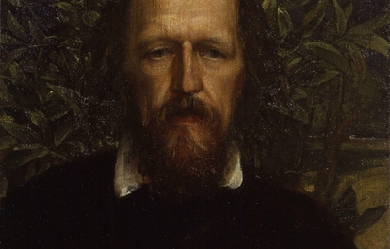
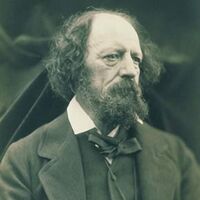
Alfred Tennyson, 1st Baron Tennyson, FRS (6 August 1809 – 6 October 1892) was Poet Laureate of the United Kingdom during much of Queen Victoria's reign and remains one of the most popular poets in the English language. A number of phrases from Tennyson’s work have become commonplaces of the English language, including “Nature, red in tooth and claw”, “'Tis better to have loved and lost / Than never to have loved at all”, “Theirs not to reason why, / Theirs but to do and die”, “My strength is as the strength of ten, / Because my heart is pure”, “Knowledge comes, but Wisdom lingers”, and “The old order changeth, yielding place to new”. He is the ninth most frequently quoted writer in The Oxford Dictionary of Quotations.


Mi edad no condiciona mi madurez, mis años mi vejez y mis pensamientos mis acciones. Recordarme por aquello que os hice u os haré, no soy una mente que se conforma con lo que le dan por nada, busco nuevas experiencias, nuevos cambios, nuevas muestras de un afecto innecesario. Soy humana y como tal busco, buscaré y buscaría para poder encontrarme. Mi meta el futuro pasándolo por el presente y con heridas del pasado. Mi propósito conmoveros y hacer que el Ego de mis musas aumente. Mi sueño....Poder seguir soñando. MI BLOG:futurodescritor.blogspot.com Libro disponible en united.pc en sección novelas, bajo el título Bestemming
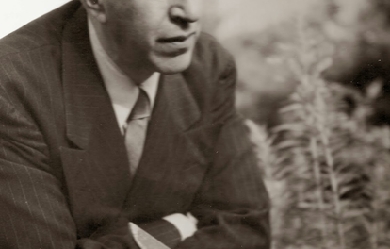
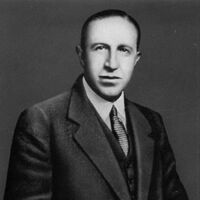
Pedro Salinas Serrano (Madrid, 27 de noviembre de 1891 – Boston, 4 de diciembre de 1951) fue un escritor español conocido sobre todo por su poesía y ensayos. Dentro del contexto de la Generación del 27, se le considera uno de sus mayores poetas. Sus traducciones de Proust contribuyeron al conocimiento del novelista francés en el mundo hispanohablante. Al concluir la guerra civil española, se exilió en Estados Unidos hasta su muerte.
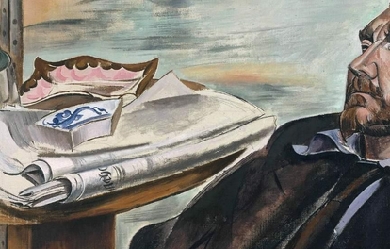
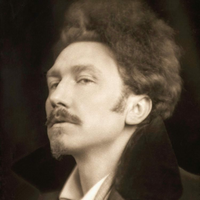
Ezra Weston Loomis Pound (30 October 1885 – 1 November 1972) was an American expatriate poet, critic and a major figure of the early modernist movement. His contribution to poetry began with his promotion of Imagism, a movement that derived its technique from classical Chinese and Japanese poetry, stressing clarity, precision and economy of language. His best-known works include Ripostes (1912), Hugh Selwyn Mauberley (1920), and his unfinished 120-section epic, The Cantos (1917–1969). Working in London in the early 20th century as foreign editor of several American literary magazines, Pound helped to discover and shape the work of contemporaries such as T. S. Eliot, James Joyce, Robert Frost, and Ernest Hemingway. He was responsible for the publication in 1915 of Eliot's “The Love Song of J. Alfred Prufrock,” and for the serialization from 1918 of Joyce's Ulysses. Hemingway wrote of him in 1925: “He defends [his friends] when they are attacked, he gets them into magazines and out of jail. ... He writes articles about them. He introduces them to wealthy women. He gets publishers to take their books. He sits up all night with them when they claim to be dying... he advances them hospital expenses and dissuades them from suicide.”


Isaac Watts (17 July 1674– 25 November 1748) was an English Christian minister, hymnwriter, theologian and logician. A prolific and popular hymn writer, his work was part of evangelization. He was recognized as the “Father of English Hymnody”, credited with some 750 hymns. Many of his hymns remain in use today and have been translated into numerous languages.

L'autore nasce a Monaco di Baviera ( Germania) il 3 luglio del 1987, da genitori calabresi e , dopo un'infanzia trascorsa fra l'Italia e la Baviera , nel 1994 la sua esistenza si stabilizza definitivamente in Calabria, dove compirà gli studi della propria formazione. All'età di 8/9 anni inizia a mostrare una particolare predilezione per l'arte figurativa ( il fumetto ) e successivamente nei primi anni dell'adolescenza , tale interesse si sposta su un altro canale espressivo, ovvero la scrittura e nella fattispecie la poesia, tant'è che nel 2019 pubblica una raccolta di poesie dal titolo " Pane al pane, vino al vino"©con una piccola casa editrice locale, contenente componimenti scritti fra il 2003 ed il 2018. Nel periodo pre- pandemia mette in ordine altri componimenti, racchiudendoli in una raccolta dal titolo "Crisalidi, amnesie di un giorno all'imbrunire"©; scritti che appariranno anche in ordine sparso su diverse antologie e su diverse riviste dedicate alla poesia. Negli anni, partecipa a numerosi concorsi di poesia , tant'è che in uno di questi, precisamente nel 2015 ( al Poetry slam Murazzi) è fra i dieci finalisti a livello regionale ( Calabria). Consegue presso l'Unical , nel 2013 la Laurea in Scienze dell'Educazione. Attualmente vive ancora nella casa in campagna, del paesino calabro della provincia di Cosenza e, a tutt'oggi l'autore trova la linfa necessaria per vivere nella potenza evocativa dell'arte e della poesia ; a suo modo di vedere "Madre rigenerante"dalle capacità curative.
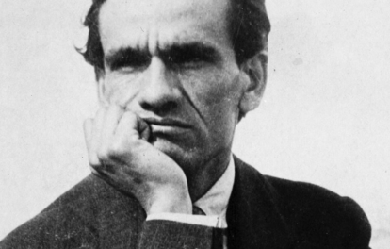
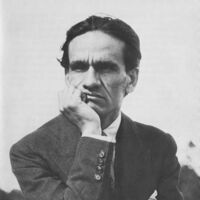
CÉSAR VALLEJO (1892-1938) Decimosegundo hijo de la familia Vallejo Mendoza, César Abraham Vallejo, nace en marzo de 1892, en Santiago de Chuco (3,500 metros de altitud) más gran aldea que ciudad de la cordillera peruana. Alumno remarcable, será brillante estudiante. En 1910: Parte para Trujillo (4 días de viaje a caballo) y se inscribe en la Facultad de Filosofía y Letras. En 1911: La idea de hacerse médico lo lleva a Lima, pero pronto renuncia a la carrera médica y vuelve a Trujillo. Poco después entra a trabajar en la hacienda "Roma" (producción azucarera) de la que "saldrá marcado". . . y es que si el joven Vallejo está favorecido por un tratamiento reservado sólo a los empleados superiores y con un salario satisfactorio no puede sin embargo, no ver ni oír cuando apenas clarece el alba, llegar los peones (cerca de 4,000) en el inmenso patio y ahí ponerse en fila para pasar lista, y salir para los campos de caña, donde se extenuarán hasta el sol poniente, con un puñado de arroz como alimento. No puede asimismo saber que todos no son más que pobres criaturas salvajemente capturadas por siniestros enganchadores, y cobardemente retenidas por vida con el alcohol que, dominicalmente y a sabiendas se les vende a crédito. Irremediablemente endeudado vuelto en pocas semanas, insolvente su deuda, cubriendo rápidamente un número de daños superior al que va a vivir el peón tendrá que garantizar su deuda con esto que sólo le queda: sus hijos, nacidos o por nacer. . . Se comprende que el recuerdo de la hacienda "Roma" haya sido durable en un ser que como Vallejo, le obsesionaba la injusticia social En 1913: Renuncia a su empleo en la hacienda y nuevamente regresa a Trujillo. Con el año, que se abre, reanuda sus estudios (Letras y paralelamente estudios de Derecho) y consigue un puesto de profesor de colegio. El primer éxito que consigue Vallejo con su tesis "El Romanticismo en la Poesía Española" es completo. Rápidamente es adoptado por los intelectuales y artistas quienes, muy numerosos, forman un grupo inquieto, turbulento y audaz, cuya bohemia no es en Vallejo sino un hábito, publica sus primeros versos de origen didáctico imponiéndose (él) poco por el dinamismo y los rasgos humorísticos de su fuerte personalidad intelectual y artística. En 1917: Deja Trujillo por la capital dejando en esa un recuerdo profundo mezclado de un sentimiento de frustración. Un block de poemas compone todo su bagaje. En 1918: Triste e incolora llegada a Lima. Reacio a toda idea de economía, los algunos recursos traídos de Trujillo pronto se han agotado. Sin embargo, ya un tanto conocido en el medio intelectual entra en contacto con los periódicos y revistas que le publican uno que otro poema, consiguiendo, por otra parte y a tiempo, un puesto de director de colegio. Con el proyecto de conseguir el doctorado de Letras y de Derecho, prosigue sus estudios en la Universidad Nacional Mayor de San Marcos. Pero ya ha llevado su primer poemario al impresor. En el mes de agosto de ese mismo año, muere su madre, en Santiago de Chuco: poemas no a su madre, sino a "la" madre, una, universal. Aun habiendo impreso su primer libro quedará estancado por largos meses, en la espera de un prólogo que Valdelomar, muy en vista en aquella época, le ha prometido. Es finalmente que "Los Heraldos Negros" aparecerán no en 1918 como lo indica la edición sino en 1919 sin el prólogo tan esperado. Elogios entusiastas y primeros dardos. 1920: En agosto sale para Santiago de Chuco pasando por Huamachuco, pronunciando una conferencia que produce escándalo pero ahí llega sólo para verse mezclado en un sangriento conflicto local que degenera en incendio. En un impulso, bien característico de Vallejo se dirige en conciliador a los lugares del atentado. Su sola presencia le denuncia en el concepto de las autoridades, tan parciales como incompetentes. Acusado por incendiario y disturbios políticos con 19 mas, está buscado y detenido el 6 de Noviembre. Será absuelto y liberado el 26 de Febrero siguiente (1921). 1922: En junio Vallejo participa en un concurso cuyo premio gana con "Más allá de la vida y la muerte" que le permite hacer imprimir su segundo volumen de poemas "Trilce" entre cayos versos muchos han sido escritos en la carcel de Trajino y que aparecen cuando Chocano culmina según él mismo como el "Walt Whitman del Sur". . . Un solo testimonio favorable: el prólogo de la más ferviente admiración de Antenor Orrego y un comentario: el de L.A Sánchez que expresa con asombro.... ¿Porqué Vallejo ha escrito "Trilce"? . ha lanzado un libro incomprensible y estrambótico. Y vuelve a preguntarse: "Pero ¿por qué habrá escrito "Trilce" Vallejo?, obra que será medio siglo mas tarde objeto de un insuperable estudio de 565 páginas, por el Dr. Neale-Silva: Chileno catedrático de la Universidad de Wisconsin. En 1923: Aparecen "Fabla salvaje" y "Escalas melografiadas". En junio, Vallejo que proyecta su evasión desde 1920 y, sobre todo, desde la aparición de 'Trilce", se embarca para Europa, con una moneda de 500 soles, un águila de oro anudada en su pañuelo. Ignorando el idioma, sin recursos ni relaciones y sin sombra de perspectivas, llega en julio a Paris, un viernes 13. Dos años va a pasar una vida de duras penurias hasta escapando con las justas de la muerte debida a una hemorragia consecutiva a una intervención quirúrgica. En 1924: Muerte de su padre de la que se entera, en París, por los periódicos. Un escultor de Costa Rica, Max Jiménez le deja su "atelier" de la calle Vercingétorix, aliviándole aunque muy relativamente, su apremiante situación económica. Sus relaciones sin embargo se extienden. Viene a conocer al escultor José de Creft quien expone tres perfiles de Vallejo. Conoce a Juan Gris estableciéndose entre ambos una grata amistad que cortará en 1927 la muerte prematura del gran pintor a la edad de 40 años y más tarde conoce al hijo de Jongkind y a Waldo Franck. Y al azar de los años y más o menos de paso, conocerá a Lipchitz, Unamuno, Dullin, Barrault, Tzara, Desnos, Portinari, entre otros (más entrevistas con personalidades como Gosset, Maiakovski, Reinhardt, Meyerhold, como lo indica su labor periodistica). En 1925: En mayo se funda en Paris la empresa "Los grandes periódicos iberoamericanos", en la que consigue el puesto de secretario. Poco después emprende una serie de artículos para las revistas "Variedades" y "Mundial" de Lima, colaboraciones que se proseguirán hasta 1930. Por otra parte, obtiene por Pablo Abril de Vivero, una beca otorgada por el gobierno español (unas 300 pesetas mensuales) y en octubre viaja por primera vez a España. Por asegurada que esté su situación material - aunque relativamente- Vallejo experimenta un estado persistente de inestabilidad y de descontento de si mismo cuya causa no reside en su temperamento en extremo angustiado y apenas diferenciable en realidad del estado de crisis permanente a grado variable. sino en alguna laguna personal de orden moral. Vallejo quien como periodista tiene entrada a los teatros, conciertos, exposiciones y frecuenta por lo demás los cafés en boga exclama en el primer semestre de 1927: "Todo esto no es ni yo ni mi vida". 1927: Seria difícil admitir en que aquella época, Vallejo, quien va a tener 35 años, aún busca y se busca para sí solo. No. En abril, renuncia a su empleo de secretario en "Los grandes periódicos..." En septiembre, renuncia a su beca del gobierno español. Vallejo medita, se interroga. ¿hacia dónde va? ¿Cuál es su contribución humana a la vida de los hombres? Inquietud definida; primeros síntomas de la profunda crisis que pronto le afectará gravemente (1927 - 1928). Crisis moral de la conciencia indubitablemente, ya que es a raíz de ella que Vallejo entrevé haber detectado la causa de su agudo malestar: el alejamiento y la ignorancia de los problemas que más atormentan a la humanidad avasallada y sufrida en la cual vive. No obstante, se resiste a ver en el marxismo la solución de tan numerosos males secularmente pretendidos insolubles e irremediables, aunque, por otra parte, sospecha y presiente que un sistema enteramente nuevo, y no por azar unánimemente rechazado por los explotadores y los prepotentes, ha de implicar necesaria e ineludiblemente algún mejoramiento por primera vez real, palpable, fundamental para las masas trabajadoras y frustradas. Primeros estudios de observación del marxismo. 1928: El año no se abre con gratas perspectivas; Vallejo mismo con una lucidez conforme a su ética ha destruído el mínimo de seguridad tan duramente conseguido. Pronto muy seriamente enfermo tiene que retirarse a los alrededores de Paris para poder restablecerse, físicamente al menos. Transcurre el Verano. Más o menos repuesto en vísperas del otoño, y provisto de algunos conocimientos marxistas parte en octubre para la Unión Soviética. En noviembre está de vuelta en Paris. A fines de diciembre, ruptura con el Aprismo del que había sido sólo simpatizante y crea en Paris la célula marxista peruana. Julio 1923/24 - 1929 es la etapa artística de "Poemas en Prosa" "Contra el secreto profesional" y "Hacia reino de los Sciris", y es el período, aún apolítico, en que surge y se define con su primer viaje a la Unión Soviética (Oct.) la evolución ideológica revolucionaria de Vallejo. 1929-1930: Estudio profundizado del marxismo. Su ideología se cristaliza, trascendente, definitiva, afirmándose luego el militante, dentro del marxismo mas no dentro del comunismo. Octubre de 1929; segundo viaje a la U.R.S.S. A su vuelta inicia "El arte y la revolución", "Moscú contra Moscú" (obra teatral), más tarde intitulada "Entre dos orillas corre el río". No escribe poemas... En mayo de 1930 pasa un mes en España, donde concluye la segunda edición de "Trilce". El 2 de diciembre, está declarado como "indeseable" y expulsado del territorio francés. El 30 de Diciembre de 1930, parte para España. 1931: Situación material difícil en extremo. Trabajo intensivo como nunca antes. En el curso del año, asiste a la proclamación de la República (ni providencialmente ni solidario o entusiasta, contrariamente a lo que se ha asegurado) sino en perfecta indiferencia, no exenta de amargura, "Una revolución sin efusión de sangre -y la experiencia lo confirma- no es una revolución", afirma y mantiene Vallejo. Pese a ello, se inscribe al Partido Marxista Español, enseña las primeras nociones del marxismo a estudiantes obreros simpatizantes. Para remediar la precariedad material que le apremia traduce tres obras de escritores franceses. Escribe y logra publicar "El tungsteno' novela proletaria emergida de la Hacienda "Roma"... "Rusia en 1931", el éxito editorial mayor después de "Sin novedad en el frente" de Erich Remarque, tres ediciones en cuatro meses. Sobre pedido escribe "Paco Yunque", un cuento para niños que el editor rechaza por "demasiado triste"... En octubre de ese mismo año de 1931, tercer y último viaje a la Unión Soviética, donde roza la muerte por segunda vez desde su llegada a Europa, a unos cinco metros de un grave accidente del trabajo. El 30 está de vuelta. En grave situación material Vallejo, para resolver su problema económico, procura colocar "Moscú contra Moscú". Rechazado. Presenta "El arte y la revolución". Rechazado. Presenta otra pieza de teatro, "Lock out". Rechazado. Propone "Rusia contra el segundo plan quinquenal". Rechazado. Apenas emprendido y pese al reciente e innegable éxito de "Rusia en 1931". Pese a la calurosa ayuda de Carcia Lorca que le acompaña en todas sus gestiones, todas las tentativas fracasarán por la violencia e ideología de sus obras. Vallejo que había esperado mucho de su teatro, queda desconcertado. Decide su regreso a Francia y dejó España el 11 de Febrero de 1932. 1932. Tercera y última etapa en la trayectoria literaria de Vallejo. Etapa de "Poemas Humanos", "Colacho hermanos", "España aparta de mi este cáliz" y "La piedra cansada" "Poemas humanos" han nacido en la inmensa y lejana Unión Soviética con unas estrofas que escribe en el curso de su tercer viaje. Y se proseguirán algunos meses después con su llegada a Paris en febrero de 1932 hasta el 21 de noviembre de 1937. Paralelamente, en ningún momento se desvincula de los acontecimientos sociopolíticos. Aunque sólo "tolerado en territorio francés donde regresó clandestinamente asiste a una de las más peligrosas manifestaciones de aquella época contra "Las cruces de fuego" (partido de ultra derecha) con el riesgo de una nueva expulsión, irremediable ya ésta, ya que no podría regresar o de su muerte por las balas fascistas en la Plaza de la Concordia. Mas el tiempo transcurre y sus poemas se acumulan en el cajón, donde desde 1928, yacen "Poemas en Prosa". "A qué escribir poemas", exclama un día Vallejo, "¿Para qué y para quién? ¿Para el cajón?". . . Y leeremos después de su muerte. "Y, ya no puedo más con tanto cajón. . . " A principios de 1935 se decide sin embargo a proponer una selección de sus versos a un editor de Madrid quien aceptará la propuesta. Por extraña adversidad no le llegará la respuesta afirmativa a Vallejo -quien no insistía jamás- hasta que estuvo declarada la guerra civil en España. En 1936 Vallejo se resuelve políticamente a un "reposo forzado" diremos debido a la intransigencia que él opone a lo que llama "las medias tintas". Entre otras divergencias no podrá admitir un "frente popular". Pero la guerra civil surge en España (Julio 36) y ante la magnitud del acontecimiento, Vallejo depone toda discrepancia, colaborando de inmediato en la creación de "Comités de Defensa", meetings, colectas de fondo, emprende una serie de artículos en los que denuncia lo inicuo de la no-intervención, sólo provechosa al fascismo no tanto franquista que internacional. Mas el desarrollo en los acontecimientos aumentan su inquietud, y parte para Barcelona y Madrid en diciembre. El 31 está de regreso en Paris. Sus presentimientos no le han engañado y la angustia lo aparta de su obra poética. Llevado sin duda y a pesar suyo por una esperanza irreductible, prosigue sin embargo sus artículos contra el fascismo. Observa cómo la red de la pretendida no-intervención se cierra sobre el pueblo asesinado. El 2 de Julio, en un congreso internacional de escritores antifascistas parte nuevamente para España. Vallejo es nombrado delegado del Perú. Regresó el 12 del mismo mes. Durante el mes de Setiembre bruscamente surge de Vallejo el monólogo de meses interminables, en alrededor de 80 días escribe 25 poemas, los últimos de "Poemas Humanos" es a la misma España que dirige su plegaria y el exceso de su desesperación, "España, aparta de mi este cáliz". Durante diciembre escribe "La piedra cansada". El 31, al abrirse 1938, en Vallejo se ha quebrado extrañamente el poeta y el escritor. 1938: El domingo 13 de marzo, se tiende después del almuerzo para reposar un instante. Al día siguiente tiene fiebre. . . carece totalmente de apetito. . . amigos médicos compatriotas suyos le visitan recetándole una que otra pastilla sin tratarlo propiamente -Vallejo está mucho más grave de lo que ellos creen-. Paternal, pero despreocupado, Arias Schreiber, entre otros, exclama: ¡Nunca se hubiera visto morir a un hombre que sólo está cansado! Alertado por el Dr. Porras, por entonces delegado a S.D.N. la legación peruana en París decide el traslado de Vallejo a una clínica. Durante dos días Vallejo rechaza este traslado: "Si ésto me compromete". El 24 de marzo sin embargo, acepta por fin esta angustiosa pero imprescindible solución, y el médico Lejard, médico del ministro Calderón queda designado como único médico ejecutivo de Vallejo, quien tampoco atribuye mayor gravedad al estado de su paciente, quien por suprema desgracia "le cae mal".... Tendido en su último lecho, no habrá quien se sienta suficientemente garantizado por la genialidad de Vallejo, la que nacerá póstumamente, como para arriesgar unos 2 o 3 mil francos (de los antiguos ) para salvarle la vida. Después de dura agonía muere Vallejo el viernes santo, 15 de abril de 1938, a las 9 y 20 de la mañana. Sólo mas tarde se sabrá que Vallejo sucumbió a un muy viejo paludismo reaparecido después de 20 ó 25 años, a consecuencia de un estado general debilitado. Georgette de Vallejo Vine hacia él que no hay nadie en mi tumba. César Vallejo. César Vallejo ha muerto. Muerto está que yo lo vi en Montrouge, una tarde de abril. Iba con Carlos Espinosa, y llevábamos los Poemas humanos y España, aparta de mí que no hay nadie en mi tumba. este cáliz. Carlos leyó un poema, como si le escuchara Dios. Yo, llorando, leí Masa. Entonces todos los hombres de la tierra le rodearon; pero César Vallejo, ¡ay! siguió muriendo. Otero Silva Miguel LLanto de amor A César Vallejo Erguida pese a sus años con la mirada medio grisácea como el cielo limeño y evocando el tiempo tal vez su dolor o aquel Jueves Santo en un París lluvioso ese frío cerca al Sena cuando las manos temblorosas y cálidas de su querido César hablaban desde su alma pidiéndole volver aunque fuera cadåver a su tierra cobriza que se hacía bruma entre la tos y el sudor porque sabía de su pronta partida y del adiós a Georgette. Muchos del Perú no me querían pensaban que era poca cosa para él renegaban mis ideas que fueron con amor nuestra comunión popular convertidas en llantos nocturnos como si ambos estuviéramos en la cruz redimiendo penas de su pueblo muriendo lacerado por la explotación eran fervorosas confidencias de la emoción de Georgette. Cuántas veces confundió sus temblorosas manos entre las mías como queriendo transmitirme entre sus balbuceos y llanto el legado abandonado las promesas no cumplidas los oropeles de homenajes vanos y el olvido de ese su amado pueblo de su deseo postrero aún no realizado de dormir en terruño humilde y peruano. Ha transcurrido casi siete décadas todavía reposa Vallejo en Montparnasse duele aún de muerte gimen sus huesos Georgette dejó la vida defendió el ideal publicó su obra póstuma mas jamás pudo repatriar sus restos ella no paseará por el parque ni acariciará a su perrito seguirán sus pasos y su alma solitaria vagando por el edificio Marsano donde al salir los sábados le ayudaba a cruzar la calle tomándola de la mano para escuchar su clamor y su esperanza: él regresará cuando el Perú llore por amor. Addhemar H.M. Sierralta
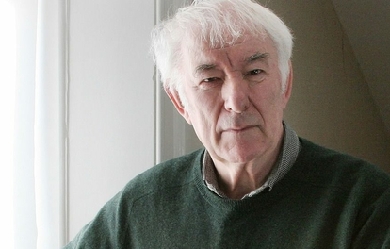
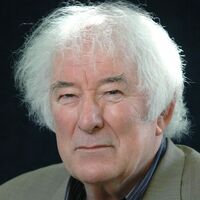
Seamus Justin Heaney (13 April 1939 – 30 August 2013) was an Irish poet, playwright and translator. He received the 1995 Nobel Prize in Literature. Among his best-known works is Death of a Naturalist (1966), his first major published volume. Heaney was and is still recognised as one of the principal contributors to poetry in Ireland during his lifetime. American poet Robert Lowell described him as “the most important Irish poet since Yeats”, and many others, including the academic John Sutherland, have said that he was “the greatest poet of our age”. Robert Pinsky has stated that “with his wonderful gift of eye and ear Heaney has the gift of the story-teller.” Upon his death in 2013, The Independent described him as “probably the best-known poet in the world”.


Nace un día incierto de 1983 cerca a Bogotá por un extraño capricho de la amistad. Crece en la capital colombiana para, luego de descubrirlo, disfrutar de la niebla, la lluvia y la sombra de las nubes grises mientras camina. Desde niño lee con curiosidad, sin ningún tipo de lineamiento, los libros que encuentra a su paso y de ahí nace su gusto inconsciente por los diferentes estilos y la fijación por representarlo en cada uno de sus libros. A partir de la muerte de su padre, cuando tenía doce años, se enfrenta a la lucha de identidad hasta que decide empezar a escribir aforismos, sin saberlo, en papeles sueltos que, hasta hoy, permanecen ocultos, e ir conociendo punto tras punto a quién lleva adentro. A través de las frases cortas y pequeñas moralejas, tiempo con los viejos campesinos del pueblo de sus abuelos y un periodo de trabajo en la construcción de edificios, en donde compartió también con campesinos y viejos sabios que le trasmitieron sus tradiciones orales, llega a escribir versos para jamás salir de ellos. Intenta estudiar literatura después de un exilio voluntario en la selva del Amazonas pero pronto se aleja de la academia para leer nada más que por gusto. Luego pasa una temporada, también fructífera para la poesía, conduciendo un taxi en las noches. Luego se convierte en un oficinista que usa su tiempo alternativamente para trabajar con ingenieros y escribir. La mayoría de su obra es escrita en esta época. Desde su adolescencia escribe narrativa que todavía no publica en papel pero se puede encontrar en los sitios, medios literarios de Hispanoamérica, en los que publica en Internet. En la revista Literariedad, de Colombia, ha sido definido así: «Le gusta explotar todas las posibilidades que da la literatura y la heteronimia, al punto de no haber encontrado descanso al escribir como si quisiera encerrar en la palabra todas sus preocupaciones estéticas, y la de su memoria de espejos». Lleva una bitácora diaria en su blog unpoemamioaldia.wordpress.com, se burla del mundo y sus inventos en cinismopoetico.wordpress.com y desinforma sobre las noticias en lapoelitica.wordpress.com. Lleva los cuadernos «Retratos» (http://www.poetashispanos.net/sergiomarentes/), y «Palabras para salvar de la quietud»(https://branded.me/sergiomarentes/posts) en donde «Dibuja con palabras» y «Lleva notas al margen que lo salvan de la quietud» respectivamente. En sus palabras es un «Poeta de un poema escrito por alguien que no era poeta»; y «No se dedica sólo a la literatura para poder ser totalmente independiente»; y es un «Animal que lee lo que escribe». Ha sido incluido en diferentes antologías de poesía y micronarrativa de diferentes comunidades de Hispanoamérica. Publicaciones: Libros: (poesía) Un bicho cayendo con épica agonía. De un marzo los días todos. Leyes mudas de la mano alzada. Error binario del huevo de oro. Nuevos Cantos mañaneros, desafinados y mudos. Disentir de las paredes en blanco. (relatos) Los espejos están adentro. (Blogs) Un (casi) poema (malo) al día (desde 2014 - ...) Poéticas poco cínicas y muy insuficientes (desde 2015 - ...) Poelítica pública poco después de madurar (desde 2016 - …) Es director (D.T.) de la Revista Rostros Latinoamérica.
Juan Antonio Alix. Desapercibido pasó el 180 aniversario del natalicio de Juan Antonio Alix (Moca, 6 septiembre 1833 – Santiago, 15 febrero 1918), recordado por sus décimas Eso e paja pa’ la gaiza, El follón de Yamasá, El negro tras de la oreja, Entre Lucas y Juan Mejía, Cánticos (mejor conocida como A las arandelas) y Los mangos bajitos. Sabemos que tenía una hermana, Carmen Alix Rodríguez, y que sus padres, Juan Mateo Alix, natural de Cabo Haitiano, y María Magdalena Rodríguez, casaron en Moca en 1829. Su madre, hija de Domingo Antonio Rodríguez y Juana de Rojas Valerio, había casado por primera vez con Juan José Espaillat Velilla, con quien había procreado a Juan Francisco, José María y Eloísa Espaillat Rodríguez, esta última esposa de su primo hermano paterno Ulises Francisco Espaillat Quiñones, presidente de la República en 1876. En su entorno familiar materno se descubren interesantes entronques. Una de sus tías fue Tomasina Rodríguez Rojas de Julia, ascendiente de los eminentes médicos Alejandro Llenas Julia y Arturo Grullón Julia, el gestor cultural Rafael Díaz Niese, el historiador mocano Julio Jaime Julia Guzmán, el historiador y político Juan Isidro Jimenes Grullón, el escritor Virgilio Díaz Grullón, el munícipe santiaguero Tomás (Jimmy) Pastoriza Espaillat y el banquero Alejandro Grullón Espaillat. Su tía abuela María Dolores Rojas Valerio de Solano fue madre, entre otros, de Domingo Antonio Solano Rojas, el famoso padre Solano, quien fuera padre, entre otros hijos, de Santiago Petitón y José Antonio Olavarrieta, troncos de las familias Petitón y Olavarrieta, y ascendiente del presidente Rafael Estrella Ureña, el Dr. José Jesús Jiménez Olavarrieta, Maestro de la Medicina Dominicana; el munícipe santiaguero Víctor Espaillat Mera y la ex primera dama Asela Mera de Jorge. De su lado, su tío abuelo Carlos de Rojas Valerio fue padre, entre otros, de Benigno Filomeno de Rojas Ramos, presidente del Congreso Constituyente que adoptó en Moca la Constitución de 1857 y prócer civil de la Guerra de la Restauración, y de Carlos de Rojas Ramos, tronco de la familia Rojas de Moca. Alix casó con Petronila Francisca Liriano Bidó y procreó a Petronila Hortensia (n.1868); Tomasina (f. 19 de marzo de 1940), esposa desde 1892 de José María Benedicto Luisón (papá Cheché), munícipe y presidente del Ayuntamiento de Santiago en varias ocasiones; Olivia Juana Antonia, quien casó con Agustín Bonilla Tavares en 1897; Rosalina (Rocha), quien casó en 1898 con Manuel Malagón Espaillat y fallecida en 1900 a la edad de 23 años; Carmen, fallecida soltera y sin descendencia, y Agripina (Pinona) Alix Liriano, esposa del puertorriqueño Ramón Goico. El matrimonio Benedicto Alix procreó a Graciela, esposa de Narciso Román; Mario, Mercedes, Migdalia, Rafael, Rosa Celia, cónyuge de Eladio Antonio Victoria Morales, y José Tomás Benedicto Alix, esposo de Delia Guzmán. Los hijos de Olivia Juana Antonia Alix de Bonilla, fueron Agustín, Betina, Carlos, Dorila, Emma, casada con Rafael Díaz Espinal; María, cónyuge de Manuel Furcy Bonnelly Fondeur; Nidia Antonia, cónyuge de José Manuel Nicolás Rodríguez, y Zaida Bonilla Alix. De su lado, los hijos de Agripina Alix Liriano fueron Mercedes, Miguel Ángel, Octavio y Juan Goico Alix, este último poeta como su abuelo. La descendencia de Alix alcanza ya la sexta generación, compuesta por niños y jóvenes nacidos a fines del siglo XX y principios del XXI, quienes de seguro desconocen que tienen “detrás de la oreja” a nuestro máximo poeta popular. Instituto Dominicano de Genealogía Referencias Hoy—hoy.com.do/juan-antonio-alix-180-anos/

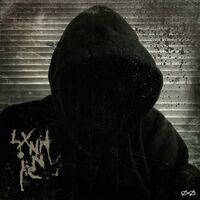
Lonnie Rutledge is a prolific artist, songwriter, and poet from the United States. He is known for his peculiar methods, intense concepts, experimental writing and often demented production. He has described his style as 'Schizodelic'; a term he is noted for coining in the mid 1990's. Lxnnnie has released many albums under assorted aliases in multiple genres of music. He has had songs featured in major motion pictures, produced music for a number of commercials, designed album covers and published a book of poetry.

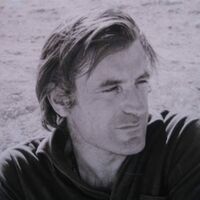
Edward James (Ted) Hughes was born in Mytholmroyd, in the West Riding district of Yorkshire, on August 17, 1930. His childhood was quiet and dominately rural. When he was seven years old, his family moved to the small town of Mexborough in South Yorkshire, and the landscape of the moors of that area informed his poetry throughout his life. Hughes graduated from Cambridge in 1954. A few years later, in 1956, he co-founded the literary magazine St. Botolph’s Review with a handful of other editors. At the launch party for the magazine, he met Sylvia Plath. A few short months later, on June 16, 1956, they were married.
_and_brother_Ronald_-_Google_Art_Project.jpg?locale=it)
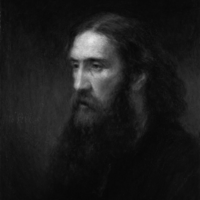
George MacDonald (10 December 1824– 18 September 1905) was a Scottish author, poet, and Christian minister. He was a pioneering figure in the field of fantasy literature and the mentor of fellow writer Lewis Carroll. His writings have been cited as a major literary influence by many notable authors including W. H. Auden, C. S. Lewis, J. R. R. Tolkien, Walter de la Mare, E. Nesbit and Madeleine L’Engle. C. S. Lewis wrote that he regarded MacDonald as his “master”: “Picking up a copy of Phantastes one day at a train-station bookstall, I began to read. A few hours later,” said Lewis, “I knew that I had crossed a great frontier.” G. K. Chesterton cited The Princess and the Goblin as a book that had “made a difference to my whole existence”. Elizabeth Yates wrote of Sir Gibbie, “It moved me the way books did when, as a child, the great gates of literature began to open and first encounters with noble thoughts and utterances were unspeakably thrilling.” Even Mark Twain, who initially disliked MacDonald, became friends with him, and there is some evidence that Twain was influenced by MacDonald. Christian author Oswald Chambers (1874–1917) wrote in Christian Disciplines, vol. 1, (pub. 1934) that “it is a striking indication of the trend and shallowness of the modern reading public that George MacDonald’s books have been so neglected”. In addition to his fairy tales, MacDonald wrote several works on Christian apologetics including several that defended his view of Christian Universalism. Early life George MacDonald was born on 10 December 1824 at Huntly, Aberdeenshire, Scotland. His father, a farmer, was one of the MacDonalds of Glen Coe, and a direct descendant of one of the families that suffered in the massacre of 1692. The Doric dialect of the Aberdeenshire area appears in the dialogue of some of his non-fantasy novels. MacDonald grew up in the Congregational Church, with an atmosphere of Calvinism. But MacDonald never felt comfortable with some aspects of Calvinist doctrine; indeed, legend has itt that when the doctrine of predestination was first explained to him, he burst into tears (although assured that he was one of the elect). Later novels, such as Robert Falconer and Lilith, show a distaste for the idea that God’s electing love is limited to some and denied to others. MacDonald graduated from the University of Aberdeen, and then went to London, studying at Highbury College for the Congregational ministry. In 1850 he was appointed pastor of Trinity Congregational Church, Arundel, but his sermons (preaching God’s universal love and the possibility that none would, ultimately, fail to unite with God) met with little favour and his salary was cut in half. Later he was engaged in ministerial work in Manchester. He left that because of poor health, and after a short sojourn in Algiers he settled in London and taught for some time at the University of London. MacDonald was also for a time editor of Good Words for the Young, and lectured successfully in the United States during 1872–1873. Work George MacDonald’s best-known works are Phantastes, The Princess and the Goblin, At the Back of the North Wind, and Lilith, all fantasy novels, and fairy tales such as “The Light Princess”, “The Golden Key”, and “The Wise Woman”. “I write, not for children,” he wrote, “but for the child-like, whether they be of five, or fifty, or seventy-five.” MacDonald also published some volumes of sermons, the pulpit not having proved an unreservedly successful venue. MacDonald also served as a mentor to Lewis Carroll (the pen-name of Rev. Charles Lutwidge Dodgson); it was MacDonald’s advice, and the enthusiastic reception of Alice by MacDonald’s many sons and daughters, that convinced Carroll to submit Alice for publication. Carroll, one of the finest Victorian photographers, also created photographic portraits of several of the MacDonald children. MacDonald was also friends with John Ruskin and served as a go-between in Ruskin’s long courtship with Rose La Touche. MacDonald was acquainted with most of the literary luminaries of the day; a surviving group photograph shows him with Tennyson, Dickens, Wilkie Collins, Trollope, Ruskin, Lewes, and Thackeray. While in America he was a friend of Longfellow and Walt Whitman. In 1877 he was given a civil list pension. From 1879 he and his family moved to Bordighera in a place much loved by British expatriates, the Riviera dei Fiori in Liguria, Italy, almost on the French border. In that locality there also was an Anglican Church, which he attended. Deeply enamoured of the Riviera, he spent there 20 years, writing almost half of his whole literary production, especially the fantasy work. In that Ligurian town MacDonald founded a literary studio named Casa Coraggio (Bravery House), which soon became one of the most renowned cultural centres of that period, well attended by British and Italian travellers, and by locals. In that house representations were often held of classic plays, and readings were given of Dante and Shakespeare. In 1900 he moved into St George’s Wood, Haslemere, a house designed for him by his son, Robert Falconer MacDonald, and the building overseen by his eldest son, Greville MacDonald. He died on 18 September 1905 in Ashtead, (Surrey). He was cremated and his ashes buried in Bordighera, in the English cemetery, along with his wife Louisa and daughters Lilia and Grace. As hinted above, MacDonald’s use of fantasy as a literary medium for exploring the human condition greatly influenced a generation of such notable authors as C. S. Lewis (who featured him as a character in his The Great Divorce), J. R. R. Tolkien, and Madeleine L’Engle. MacDonald’s non-fantasy novels, such as Alec Forbes, had their influence as well; they were among the first realistic Scottish novels, and as such MacDonald has been credited with founding the “kailyard school” of Scottish writing. His son Greville MacDonald became a noted medical specialist, a pioneer of the Peasant Arts movement, and also wrote numerous fairy tales for children. Greville ensured that new editions of his father’s works were published. Another son, Ronald MacDonald, was also a novelist. Ronald’s son, Philip MacDonald, (George MacDonald’s grandson) became a very well known Hollywood screenwriter. Theology MacDonald rejected the doctrine of penal substitutionary atonement as developed by John Calvin, which argues that Christ has taken the place of sinners and is punished by the wrath of God in their place, believing that in turn it raised serious questions about the character and nature of God. Instead, he taught that Christ had come to save people from their sins, and not from a Divine penalty for their sins. The problem was not the need to appease a wrathful God but the disease of cosmic evil itself. George MacDonald frequently described the Atonement in terms similar to the Christus Victor theory. MacDonald posed the rhetorical question, “Did he not foil and slay evil by letting all the waves and billows of its horrid sea break upon him, go over him, and die without rebound—spend their rage, fall defeated, and cease? Verily, he made atonement!” MacDonald was convinced that God does not punish except to amend, and that the sole end of His greatest anger is the amelioration of the guilty. As the doctor uses fire and steel in certain deep-seated diseases, so God may use hell-fire if necessary to heal the hardened sinner. MacDonald declared, “I believe that no hell will be lacking which would help the just mercy of God to redeem his children.” MacDonald posed the rhetorical question, “When we say that God is Love, do we teach men that their fear of Him is groundless?” He replied, “No. As much as they fear will come upon them, possibly far more.... The wrath will consume what they call themselves; so that the selves God made shall appear.” However, true repentance, in the sense of freely chosen moral growth, is essential to this process, and, in MacDonald’s optimistic view, inevitable for all beings (see universal reconciliation). He recognised the theoretical possibility that, bathed in the eschatological divine light, some might perceive right and wrong for what they are but still refuse to be transfigured by operation of God’s fires of love, but he did not think this likely. In this theology of divine punishment, MacDonald stands in opposition to Augustine of Hippo, and in agreement with the Greek Church Fathers Clement of Alexandria, Origen, and St. Gregory of Nyssa, although it is unknown whether MacDonald had a working familiarity with Patristics or Eastern Orthodox Christianity. At least an indirect influence is likely, because F. D. Maurice, who influenced MacDonald, knew the Greek Fathers, especially Clement, very well. MacDonald states his theological views most distinctly in the sermon Justice found in the third volume of Unspoken Sermons. In his introduction to George MacDonald: An Anthology, C. S. Lewis speaks highly of MacDonald’s theology: “This collection, as I have said, was designed not to revive MacDonald’s literary reputation but to spread his religious teaching. Hence most of my extracts are taken from the three volumes of Unspoken Sermons. My own debt to this book is almost as great as one man can owe to another: and nearly all serious inquirers to whom I have introduced it acknowledge that it has given them great help—sometimes indispensable help toward the very acceptance of the Christian faith. ... I know hardly any other writer who seems to be closer, or more continually close, to the Spirit of Christ Himself. Hence his Christ-like union of tenderness and severity. Nowhere else outside the New Testament have I found terror and comfort so intertwined.... In making this collection I was discharging a debt of justice. I have never concealed the fact that I regarded him as my master; indeed I fancy I have never written a book in which I did not quote from him. But it has not seemed to me that those who have received my books kindly take even now sufficient notice of the affiliation. Honesty drives me to emphasize it.” Bibliography Fantasy * Phantastes: A Fairie Romance for Men and Women (1858) * “Cross Purposes” (1862) * Adela Cathcart (1864), containing “The Light Princess”, “The Shadows”, and other short stories * The Portent: A Story of the Inner Vision of the Highlanders, Commonly Called “The Second Sight” (1864) * Dealings with the Fairies (1867), containing “The Golden Key”, “The Light Princess”, “The Shadows”, and other short stories * At the Back of the North Wind (1871) * Works of Fancy and Imagination (1871), including Within and Without, “Cross Purposes”, “The Light Princess”, “The Golden Key”, and other works * The Princess and the Goblin (1872) * The Wise Woman: A Parable (1875) (Published also as “The Lost Princess: A Double Story”; or as “A Double Story”.) * The Gifts of the Child Christ and Other Tales (1882; republished as Stephen Archer and Other Tales) * The Day Boy and the Night Girl (1882) * The Princess and Curdie (1883), a sequel to The Princess and the Goblin * The Flight of the Shadow (1891) * Lilith: A Romance (1895) Realistic fiction * David Elginbrod (1863; republished as The Tutor’s First Love), originally published in three volumes * Alec Forbes of Howglen (1865; republished as The Maiden’s Bequest) * Annals of a Quiet Neighbourhood (1867) * Guild Court: A London Story (1868) * Robert Falconer (1868; republished as The Musician’s Quest) * The Seaboard Parish (1869), a sequel to Annals of a Quiet Neighbourhood * Ranald Bannerman’s Boyhood (1871) * Wilfrid Cumbermede (1871–72) * The Vicar’s Daughter (1871–72), a sequel to Annals of a Quiet Neighborhood and The Seaboard Parish * The History of Gutta Percha Willie, the Working Genius (1873), usually called simply Gutta Percha Willie * Malcolm (1875) * St. George and St. Michael (1876) * Thomas Wingfold, Curate (1876; republished as The Curate’s Awakening) * The Marquis of Lossie (1877; republished as The Marquis’ Secret), the second book of Malcolm * Paul Faber, Surgeon (1879; republished as The Lady’s Confession), a sequel to Thomas Wingfold, Curate * Sir Gibbie (1879; republished as The Baronet’s Song) * Mary Marston (1881; republished as A Daughter’s Devotion) * Warlock o’ Glenwarlock (1881; republished as Castle Warlock and The Laird’s Inheritance) * Weighed and Wanting (1882; republished as A Gentlewoman’s Choice) * Donal Grant (1883; republished as The Shepherd’s Castle), a sequel to Sir Gibbie * What’s Mine’s Mine (1886; republished as The Highlander’s Last Song) * Home Again: A Tale (1887; republished as The Poet’s Homecoming) * The Elect Lady (1888; republished as The Landlady’s Master) * A Rough Shaking (1891) * There and Back (1891; republished as The Baron’s Apprenticeship), a sequel to Thomas Wingfold, Curate and Paul Faber, Surgeon * Heather and Snow (1893; republished as The Peasant Girl’s Dream) * Salted with Fire (1896; republished as The Minister’s Restoration) * Far Above Rubies (1898) Poetry * Twelve of the Spiritual Songs of Novalis (1851), privately printed translation of the poetry of Novalis * Within and Without: A Dramatic Poem (1855) * Poems (1857) * “A Hidden Life” and Other Poems (1864) * “The Disciple” and Other Poems (1867) * Exotics: A Translation of the Spiritual Songs of Novalis, the Hymn-book of Luther, and Other Poems from the German and Italian (1876) * Dramatic and Miscellaneous Poems (1876) * Diary of an Old Soul (1880) * A Book of Strife, in the Form of the Diary of an Old Soul (1880), privately printed * The Threefold Cord: Poems by Three Friends (1883), privately printed, with Greville Matheson and John Hill MacDonald * Poems (1887) * The Poetical Works of George MacDonald, 2 Volumes (1893) * Scotch Songs and Ballads (1893) * Rampolli: Growths from a Long-planted Root (1897) Nonfiction * Unspoken Sermons (1867) * England’s Antiphon (1868, 1874) * The Miracles of Our Lord (1870) * Cheerful Words from the Writing of George MacDonald (1880), compiled by E. E. Brown * Orts: Chiefly Papers on the Imagination, and on Shakespeare (1882) * “Preface” (1884) to Letters from Hell (1866) by Valdemar Adolph Thisted * The Tragedie of Hamlet, Prince of Denmarke: A Study With the Test of the Folio of 1623 (1885) * Unspoken Sermons, Second Series (1885) * Unspoken Sermons, Third Series (1889) * A Cabinet of Gems, Cut and Polished by Sir Philip Sidney; Now, for the More Radiance, Presented Without Their Setting by George MacDonald (1891) * The Hope of the Gospel (1892) * A Dish of Orts (1893) * Beautiful Thoughts from George MacDonald (1894), compiled by Elizabeth Dougall In popular culture * (Alphabetical by artist) * Christian celtic punk band Ballydowse have a song called “George MacDonald” on their album Out of the Fertile Crescent. The song is both taken from MacDonald’s poem “My Two Geniuses” and liberally quoted from Phantastes. * American classical composer John Craton has utilized several of MacDonald’s stories in his works, including “The Gray Wolf” (in a tone poem of the same name for solo mandolin– 2006) and portions of “The Cruel Painter”, Lilith, and The Light Princess (in Three Tableaux from George MacDonald for mandolin, recorder, and cello– 2011). * Contemporary new-age musician Jeff Johnson wrote a song titled “The Golden Key” based on George MacDonald’s story of the same name. He has also written several other songs inspired by MacDonald and the Inklings. * Jazz pianist and recording artist Ray Lyon has a song on his CD Beginning to See (2007), called “Up The Spiral Stairs”, which features lyrics from MacDonald’s 26 and 27 September devotional readings from the book Diary of an Old Soul. * A verse from The Light Princess is cited in the “Beauty and the Beast” song by Nightwish. * Rock group The Waterboys titled their album Room to Roam (1990) after a passage in MacDonald’s Phantastes, also found in Lilith. The title track of the album comprises a MacDonald poem from the text of Phantastes set to music by the band. The novels Lilith and Phantastes are both named as books in a library, in the title track of another Waterboys album, Universal Hall (2003). (The Waterboys have also quoted from C. S. Lewis in several songs, including “Church Not Made With Hands” and “Further Up, Further In”, confirming the enduring link in modern pop culture between MacDonald and Lewis.) References Wikipedia—https://en.wikipedia.org/wiki/George_MacDonald


